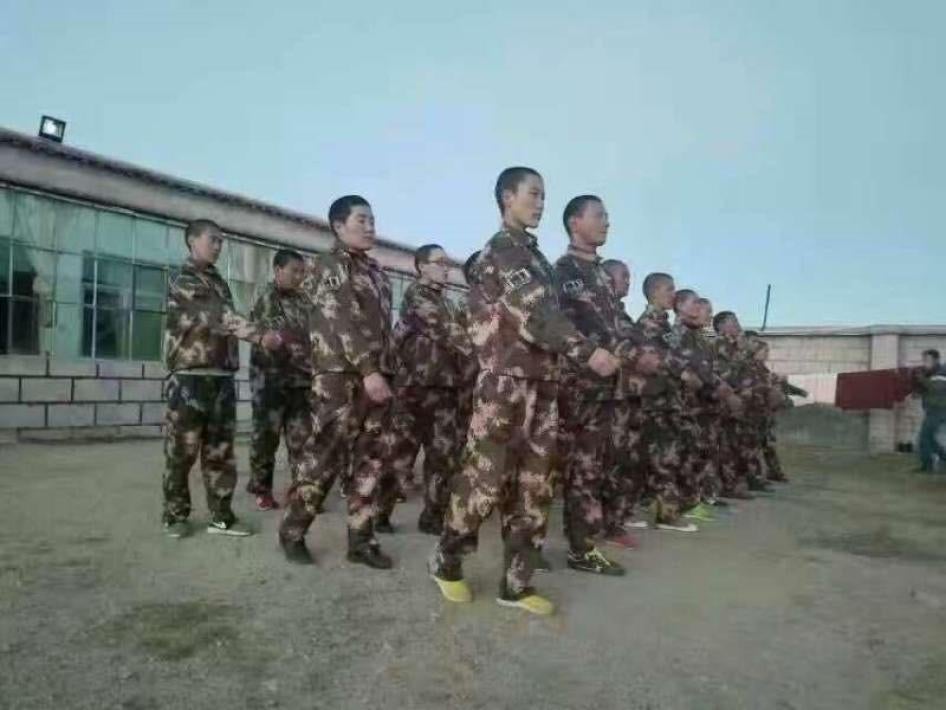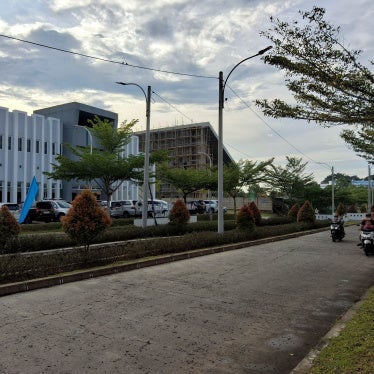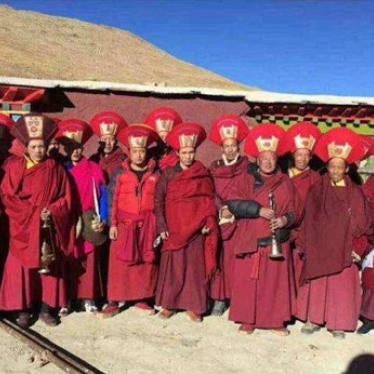(New York) – Chinese authorities should halt the expulsion and political re-education of monks and nuns from a major Tibetan religious institution, Human Rights Watch said today. According to a statement by an abbot of the institution, Chinese officials announced on March 12, 2017, that 3,225 homes at Larung Gar, the world’s largest Tibetan Buddhist institution, would be torn down by April 30.
Many of the monks and nuns already expelled from Larung Gar and the nearby religious community at Yachen Gar, both in Tibetan areas of Sichuan province, have been forced to return to the Tibet Autonomous Region (TAR) and subjected to exceptional restrictions on their liberty and to degrading treatment. In November 2016, the authorities forced at least one group to undergo political re-education and apparent public humiliation in Nyingtri (Linzhi in Chinese), in southeastern TAR.
“China is aggressively dismantling religious freedom along with religious life at Larung Gar by subjecting many expelled monks and nuns to forced re-education,” said Sophie Richardson, China director at Human Rights Watch. “The restrictions imposed on former residents should be removed so they can exercise fully their rights to religious practice, including freely joining religious institutions and observing religious rituals.”
A senior abbot said in a speech to the community on March 23 that the monks and nuns “who have left had never wanted to leave... And whether or not they had some place to go, they still had to leave.” He added that “the demolitions and expulsions come from the policy of the senior levels of government, and cannot be discussed” and called on all monks and nuns to “show great forbearance and not react with protest, suicide and the like.”
China is aggressively dismantling religious freedom along with religious life at Larung Gar by subjecting many expelled monks and nuns to forced re-education.
China Director
Foreign media reported that the TAR authorities subjected 100 monks and nuns, believed to have been expelled from Larung Gar, to political “re-education” in Nyingtri municipality in November. A video circulated on social media shows 25 young Tibetan women with shaven heads, who appear to be nuns, dressed in military jackets and standing in rows inside a police or government office decorated in Tibetan style. The women are chanting in unison, “The Tibetans and the Chinese are daughters of the same mother, the name of the mother is China,” part of a song often used by officials in Tibet to propagate the view that Tibetans are genetically or culturally Chinese. A photograph circulated at the same time shows the same women, dressed in full military fatigues, carrying out a military-style exercise inside a walled compound.
A second video, circulated a few days after the first, shows 12 Tibetan nuns dancing on the stage of a theater in front of what appears to be an audience of officials. The nuns, dressed in religious robes, perform a choreographed dance routine to the song, “The Song of the Emancipated Serfs.” The song is associated with official Communist Party celebrations and was originally performed in front of Chairman Mao Zedong in Beijing in 1959. A banner above the stage reads “Graduation Art Show for the Law and Politics Training Course for Buddhist Monks and Nuns, Kongpo Gyamda County.” Kongpo Gyamda county (Gongbujiangda in Chinese) is in Nyingtri municipality, and the video is believed to have been filmed there on November 10, 2016.

The timing and circumstances of the two videos and the photograph indicate that the women pictured are Tibetan nuns expelled in 2016 from Larung Gar or Yachen Gar. Buddhist nuns usually make a commitment to “refrain from singing, dancing, and viewing entertainments” as the sixth of the 10 sramenerika or novice vows taken by nuns or monks when they are first ordained. This strongly suggests that these performances were coerced and that officials required these nuns to sing and dance to humiliate or embarrass them. The use of forced singing and dancing as part of political re-education for expelled nuns is not known to have occurred previously in the TAR.
In late summer 2016, two nuns known to Human Rights Watch, who had been expelled from Larung Gar and returned forcibly to the TAR, were not allowed to remain in Lhasa, where they had previously lived for many years, but were forced to return to the village of their birth in a rural area of southern Tibet. The authorities required them to report at regular intervals to the local police station and did not allow them to join any nunneries or institutions in the TAR or elsewhere.
Other sources have told Human Rights Watch that no former monks and nuns who have been returned to the TAR are allowed to join any monastery or nunnery there, which means they are considered to be “mobile religious personnel.” Since an official announcement in September 2012, such unaffiliated monks and nuns are not permitted to carry out religious rituals in the TAR outside their own homes unless they have a special permit. This means that the returned monks and nuns cannot carry out religious services for others, which would constitute their normal source of income, and that Tibetans in the TAR face increasing difficulties in finding religious practitioners to recite prayers at funerals and other family events.
In June 2016, the local government in Serta county, Sichuan, ordered the monks running Larung Gar to begin reducing its occupant numbers to a maximum of 5,000 by September 2017. The institution is estimated to have had between 10,000 and 20,000 occupants before evictions began. It is unclear whether the March 12 decision requiring the demolition of 3,225 homes includes the 1,500 or more homes that have already been demolished. So far, 4,500 residents have been forced to leave, according to the March 23 statement from a senior abbot.
Authorities appear to have made certain concessions in response to requests from the monastery regarding the demolition and eviction procedures at Larung Gar, including unconfirmed reports that some monks and nuns there were compensated for their demolished homes, and that approximately 1,200 expelled nuns have been rehoused in four temporary camps in neighboring counties within Qinghai and Sichuan provinces. But the demolitions and evictions remain a violation of the community members’ rights of religious freedom and practice.
In November 2016, seven experts from the United Nations wrote to the Chinese government requesting detailed information regarding the mass expulsion of Tibetan, Chinese, and other monks and nuns from the monastic settlements at Larung Gar and Yachen Gar. The statement also asked the government to provide information about the legal grounds for the demolitions and expulsions, and what steps had been taken to resettle or rehouse those made homeless. It also requested an explanation about the reported lack of consultation with local religious leaders, the rationale for involving government officials in monastic affairs, and what steps authorities would take to ensure the right of religious freedom.
The UN has said that the Chinese government replied to these requests on December 5, 2016. The UN should publicly release China’s reply.
“China’s conduct at Larung Gar and Yachen Gar shows a cruel and unyielding disrespect for religious freedom,” Richardson said. “Chinese authorities can undo some of the harm by halting the destruction of this community, fairly addressing the needs of the religious community, and providing transparent explanations about its conduct at Larung Gar and in Nyingtri.”








